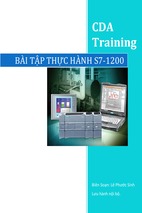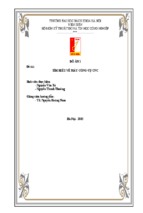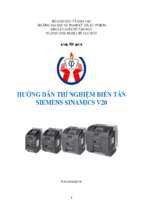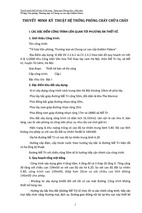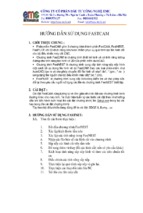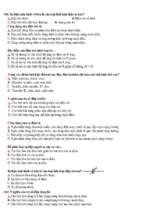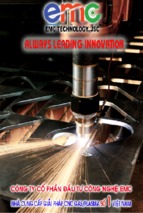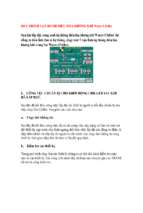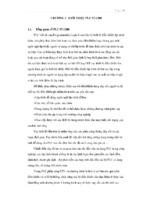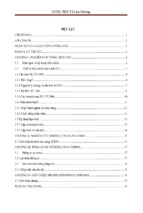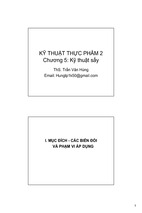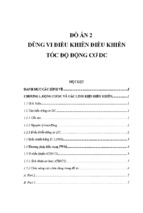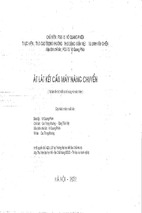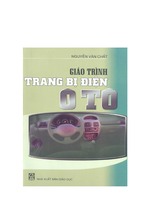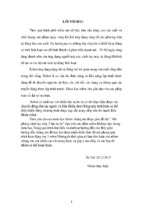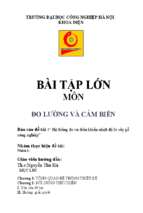United States Patent
[15]
Holm
[451 June 27, 1972
[54] SOLUBLE OIL COMPOSITION
[72] Inventor: Le Roy w. Holm, Fullerton, Calif.
[73] Assignee: Union-Oil Company of California, Los An
'
[22] Filed:
3,673,124
3,163,214
12/1964
Csaszar .............. ..
252/855 X
3,254,714
6/1966
Gogarty et a1. . . . . . .
. . . . . . ..166/274
3,296,129
1/1967
Scheidker et al.
3,330,343
7/1967
Tosch et a1 ......... ..
...252/8.55 X
geles, Calif.
3,454,095 7/1969
3,477,511 11/1969
Messenger et al..
Jones et al.
....166/274 X
....166/274
Aug. 27, 1969
3,507,331
Jones ................................... ..166/273
[21 I Appl. No.: 853,522
4/1970
252/495 X
Primary Examiner-Herbert B. Guynn
Related US. Application Data
[63] Continuation-impart of~Ser. No. 713,303, March 15,
Assistant ExamineH-Harris A. Pitlick
Attorney—Milton W. Lee, Richard C. Hartman, Lannas S.
Henderson, Robert E. Strauss and Dean Sandford
l 1968, Pat. No. 3,482,632.
[57]
[52] US. Cl. ....................... ..252/8.55 D, 166/273, 166/274,
166/275, 252/495
[51 ]
Int. Cl. ........................................................ ..C09k 3/00
[58] Field of Search
[56]
.....252/8.55 D, 49.5; 166/273,
166/274, 275
References Cited
UNITED STATES PATENTS
3,013,973 12/1961
Bennett ........................... ..252/49.5 X
7
ABSTRACT
A soluble oil composition comprising a mixture of liquid
hydrocarbon, a surface active agent and butyl Cellosolve that
is particularly adapted for use as a displacement ?uid in a mis
cible ?ooding process. The soluble oil composition can be em
ployed as a substantially anhydrous liquid or as a water-in-oil
microemulsion.
10 Claims, No Drawings
1
3,673,124
SOLUBLE OIL COMPOSITION
2
water-in-oil microemulsion is injected into the reservoir
through one or more injection or input wells penetrating the
This application is a continuation-in-part of application Ser.
oil-bearing formation and forced through the reservoir by sub
No. 713,303, filed Mar. 15, 1968, and now issued as US. Pat.
sequently injected ?ood water toward at least one production
5 or output well similarly completed in the reservoir. As the mis~
No. 3,482,632.
This invention relates to the recovery of oil from subter
proved displacement ?uid for use in a miscible ?ooding
process for the recovery of petroleum.
cible ?ooding medium passes through the reservoir, it dis
places residual oil therein and moves it into the producing well
whereupon the oil can be recovered by conventional means.
The injection and production wells can be arranged in any
It has long been recognized that substantial amounts of oil
remain unrecovered at the completion of normal primary
convenient pattern designed to achieve maximum contact of
the oil-bearing zones by the advancing ?ood front, such as the
recovery operations. Hence, various secondary methods of
recovering additional quantities of oil have been proposed,
conventional “?ve—spot“ pattern wherein a central producing
well is surrounded by four somewhat symmetrically located in~
ranean petroleum reservoirs, and more particularly to an im
such as the well-known technique of water ?ooding in which
jection wells. Another of the conventional ?ooding patterns
water is injected into the reservoir through an injection well to 15 that can be employed in the practice of this invention is the
drive additional oil toward one or more production wells
“line drive” pattern in which the injection wells are arranged
spaced apart in the reservoir from the injection well. Although
in a line so that the injected ?ooding medium advances
an additional quantity of oil can often be recovered by water
through the formation to displace oil toward one or more
?ooding, the efficiency of the water ?ood and the ultimate oil
spaced production wells that can also be arranged in a line
recovery can be further improved by introducing a solvent 20 substantially parallel to the line of injection wells. v
that is miscible with both the connate oil and with the ?ood
water into the reservoir ahead of the ?ood water.
One particular solvent system that has been suggested for
The soluble oils used herein are oleaginous compositions
which have the ability to spontaneously emulsify with water
when admixed therewith. These soluble oils comprise a liquid
use with a water drive comprises a mixture of substantially an
hydrocarbon, one or more selected surface active agents, and
hydrous soluble oil and an inert, nonaqueous solvent, 25 a minor proportion of butyl Cellosolve. The emulsions formed
preferably admixed in such proportions that the viscosity of
by the addition of water to a soluble oil are of the water-incil
the mixture approximates the viscosity of the formation oil.
type in that at water concentrations less than the inversion
The soluble oil consists of a hydrocarbon phase; one or more
soaps or non-soap surface active materials; and a stabilizing
concentration, oil is the continuous phase and the water is
30 dispersed in the oil in the form of very ?ne droplets, or
micelles, which are less than about 0.1 micron in size, and
agent which is usually a monohydric or polyhydric alcohol, or
other partially oxygenated, low molecular weight hydrocar
bon, such as a ketone. The soluble oil often contains some free
organic acid, and especially a fatty acid, such as oleic acid.
It has also been proposed that the ?ood water be preceded
by a microemulsion consisting of a soluble oil containing sub
stantial quantities of water, such as from about 10 to 50 per
cent or more water. These microemulsions are relatively sta
ble, transparent emulsions of the water-in-oil type, i.e., oil is
usually range in size from about 100 to 600 A. These emul
sions are generally transparent in appearance, and are stable
in that they remain as microemulsions on aging. By trans
parent, it is meant that the microemulsions do not have a clou
dy or opaque appearance, even though they may contain color
bodies. It is recognized, of course, that some cloudiness may
appear at certain water concentrations without adversely af
fecting the utility of the microemulsions as a miscible displace
the continuous phase and small droplets of water are dispersed 40
ment agent. Emulsions of this type are designated microemul
therein.
sions to distinguish them from ordinary water-in-oil
While the foregoing anhydrous soluble oils and microemul
macroemulsions in which the lower limit of particle size of the
sions are effective in recovering more oil than recovered by
water droplets is about 0.1 micron. At water concentrations
conventional water ?ooding, it is nevertheless desirable to
even further improve the miscible ?ooding process to reduce 45 above the inversion concentration, the emulsion inverts to an
emulsion of the water-in‘oil type in which droplets of oil are
its cost and to recover additional amounts of oil.
dispersed
in a continuous water phase. It is preferred that the
Accordingly, a principal object of this invention is to pro
water concentrations of the microemulsion of this invention
vide an improved miscible displacement ?uid for the recovery
be maintained below the inversion concentration so as to
of petroleum from subterranean reservoirs. Another object of
the invention is to provide an improved miscible displacement 50 prevent inversion to emulsions of the oil-in-water type.
One of the major constituents of the improved soluble oil
?uid suitable for injection into an oil-containing reservoir and
composition of this invention is a liquid hydrocarbon, which
subsequent displacement through the reservoir by ?ood water.
can comprise a crude petroleum oil, such as a crude oil previ
A further object of the invention is to provide an improved
ously recovered from the reservoir, or other conveniently
soluble oil composition useful as a miscible displacement ?uid
in an oil recovery process. A still further object of the inven 55 available crude oil; a re?ned or semi-re?ned petroleum
product, such as gasoline, naptha, stove oil and diesel; a
tion is to provide an improved water-in-oil microemulsion for
use as a miscible displacement ?uid. Other objects and ad
residual product obtained by the distillation of lower boiling
vantages of the invention will be apparent from the following
description.
fraction from a crude oil, such as bunker fuel oil and other
residual products; a low value re?nery by-product, such as
can be injected as a water-in-oil microemulsion.
stituents, and butyl Cellosolve. By relatively high-boiling
Brie?y, this invention contemplates an improved soluble oil 60 catalytic cycle oil, lube oil extract, and the like; and lique?ed
normally gaseous hydrocarbons such as propane, butane and
composition comprising a mixture of liquid hydrocarbon, a
LPG.
surface active agent and butyl Cellosolve useful as a displace
While soluble oils can be prepared from any of these
ment ?uid in a miscible ?ooding process. This composition is
hydrocarbon materials, or mixtures of hydrocarbons, it has
injected into the reservoir through an injection well, and
thereafter an aqueous ?ooding agent is injected to drive the 65 been found that oil recoveries are especially increased by mis
cible ?ooding with a soluble oil or microemulsion com
miscible displacement ?uid towards a production well spaced
pounded with crude petroleum oil, or other hydrocarbon mix
apart in the reservoir from the injection well. The soluble oil
ture containing relatively high—boiling hydrocarbon con
can be injected into the reservoir as an anhydrous liquid, or it
More speci?cally, this invention involves a miscible ?ood 70 hydrocarbons is meant those boiling at least above about 400°
F., and more preferably above about 600° F. The hydrocarbon
ing process in which oil is displaced from a subterranean oil
base stock can contain low-boiling hydrocarbons boiling
bear-ing reservoir by an improved soluble oil composition
below about 400° F. without adversely affecting oil recovery,
containing a minor proportion of butyl Cellosolve. in the prac
so long as a substantial portion of the base stock is comprised
tice of the invention, a slug of the improved soluble oil com
position in the form of a substantially anhydrous liquid or a 75 of the high-boiling components. For example, excellent dis
3
3,673,124
4
placement efficiencies are obtained with soluble oils com
high viscosity, light liquid hydrocarbon can be added to in
pounded from crude petroleum, even though the crude
crease the mobility of the resulting soluble oil to obtain a more
petroleum contains some fractions boiling as low as 100° F.
favorable mobility ratio between the soluble oil and the fol
lowing drive ?uid. The light hydrocarbon will usually not con
Thus, the miscible displacement ?uids preferred for use in the
practice of this invention comprise mixtures of crude petrole
um or other hydrocarbon mixtures containing relatively high
boiling hydrocarbon constituents, a surface active agent, and
butyl Cellosolve.
_
Surface active materials which can be used are those that
when admixed with the hydrocarbon cause the formation of
microemulsions of the water-in-oil type on the subsequent ad
dition of water. Agents which exhibit this property can be
de?ned by their hydrophilic-lipophilic balance and by their
spreading coefficients. The hydrophilic-lipophilic balance is
stitute more than 25 volume percent of the resulting soluble
oil.
The compositions useful in the practice of this invention can
be prepared by any of the conventional techniques. One suita
ble method of preparing these compositions is to ?rst admix
the hydrocarbon base stock, surface active material and butyl
Cellosolve in the desired proportions to form a substantially
anhydrous soluble oil. Thereafter, if desired, water is added to
obtain a microemulsion of the desired water content.
Preferably, the water employed in forming the microemulsion
an indication of the size and strength of the hydrophilic, or 15 is a salt-containing fresh water having a dissolved salt content
water-loving, or polar groups, and the lipophilic, or oil-loving,
of less than about 15,000 ppm, and more preferably less than
or non-polar, groups in a surfactant material expressed by a
about 5,000 ppm. Monovalent salts can be added to obtain a
numerical value designated HLB number. The spreading coef
ficient is an indication of the facility with which one liquid
spreads upon another liquid. Spreading coef?cients greater
than 0 indicate that the ?rst liquid will spread on the second,
and coefficients less than 0 indicate that the supernatant liquid
will simply form ?oating lenslike drops. Accordingly, surface
water having the preferred salt content.
The quantity of soluble oil or microemulsion injected
should be sufficient to establish in the reservoir a miscible
bank which can be displaced through the reservoir by the sub
sequently injected aqueous ?ooding medium. Satisfactory
recoveries can usually be obtained by the injection of 0.01 to
active material, or mixtures of materials possessing the ability 25 0.15 reservoir pore volume of the soluble oil or microemul
to spontaneously emulsify water in oil exhibit average HLB
numbers of about 3 to 7, and the most negative spreading
coefficient consistent with the system.
A number of surface active materials that exhibit the ability
51011.
In one preferred embodiment of this invention, a hydrocar
bon, such as previously recovered reservoir oil; a mixed alkyl
aryl monosulfonate obtained by sulfonation of an aromatic
to spontaneously emulsify oil and water to produce water-in 30
petroleum fraction; and butyl Cellosolve are admixed to ob
oil microemulsions are commercially available. Among the
tain a substantially anhydrous soluble oil comprised of about
preferred agents are various preferentially oil-soluble anionic
45 to 90 percent liquid hydrocarbon, 4 to 30 percent surface
surfactants such as the higher alkyl aryl sulfonates, particu
active agent and 0.5 to 8 percent butyl Cellosolve, and
larly the alkyl naphthenic monosulfonates. A particularly
preferred surface active agent is an alkyl aryl monosulfonate 35 preferably from about 45 to 75 percent hydrocarbon, 8 to 30
percent surface active agent and 3 to 8 percent butyl Cel
prepared by sulfonation of an aromatic petroleum fraction.
losolve. This anhydrous soluble oil can be used as the miscible
These sulfonates are preferably in the form of their sodium
displacement agent or water can be added to the soluble oil to
salts, however, other salts can be used.
obtain a water-in-oil microemulsion containing water in an
Butyl Cellosolve is a colorless liquid solvent, miscible both
amount up to the amount causing inversion to an oil-in-water
with water and with oil, and is chemically designated ethylene
emulsion, and preferably up to about 40 percent water.
glycol monobutyl ether or 2-butoxyethanol. The term “Cel
The soluble oil prepared in the foregoing manner is then in
losolve" is a trademark of the Union Carbide Corporation.
jected into the reservoir through one or more injection wells in
When included in a minor proportion in the soluble oil com
positions of this invention, butyl Cellosolve functions as a sta
an amount equivalent to 0.01 to 0.15 reservoir pore volume of
soluble oil more effective and improving the stability of the
resulting microemulsion. Further, it has been discovered that
injected to displace the soluble oil toward at least one produc
tion well spaced apart in the reservoir, from which ?uids are
produced in conventional manner. The aqueous ?ooding
bilizing agent rendering the surface active component of the 45 the reservoir to be treated. Aqueous ?ooding medium is then
miscible ?ooding with soluble oils and microemulsions con
medium can comprise water or brine, and can be made more
taining a minor proportion of butyl Cellosolve results in the
recovery of increased quantities of oil. While the exact 50 viscous by the addition of a thickening agent, such as sugar,
dextran, carboxymethyl cellulose, amines, glycerine, guar gum
mechanism by which the increased recovery is effected is not
and mixtures of these agents. Also, the aqueous ?ooding medi
understood, it has nevertheless been demonstrated that misci
ble ?ooding with soluble oils and microemulsions containing
um can be rendered more viscous by the addition of a small
amount of a water-soluble polymer, such as a polyac'rylamide,
butyl Cellosolve is more efficient than ?ooding with similar
55 and particularly a partially hydrolyzed polyacrylamide.
soluble oils and microemulsions containing other stabilizing
In a preferred method of practicing this invention, thicken
agents, such as isopropyl alcohol, particularly where the solu
ing agent is added to only an initial portion of the ?ood water.
ble oil or microemulsion is compounded with a hydrocarbon
Thus, in this preferred embodiment, 0.01 to 0.15 reservoir
containing relatively high-boiling constituents.
pore volume of soluble oil is injected into the reservoir and
The compositions of this invention comprise a mixture of
followed by 0.1 to 0.5 reservoir pore volume of thickened
about 45 to 90 percent liquid hydrocarbon, such as crude
aqueous ?ooding medium. Thereafter water or brine is in
petroleum oil or other hydrocarbon containing a substantial
jected to drive the previously injected ?uids toward at least
proportion of constituents boiling above about 400° F.; 4 to 30
one spaced production well.
percent of a surface active agent, such as an alkyl aryl mono
The invention is further described by the following exam
sulfonate; and 0.5 to 8 volume percent butyl Cellosolve. This 65
ples which are illustrative of speci?c modes of practicing the
composition can also contain water in an amount up to that
amount causing inversion to an oil-in-water emulsion. A
preferred composition in accordance with this invention use
ful as a miscible displacement ?uid com-prises a mixture of
about 45 to 75 percent liquid hydrocarbon, such as crude
petroleum or other high boiling hydrocarbon; 8 to 30 percent
invention and are not intended as limiting the scope of the in~
vention as de?ned by the appended claims.
EXAMPLE 1
The increased oil recovery obtainable by miscible ?ooding
of a surface active material, such as an alkyl aryl monosul
with a soluble oil having a composition in accordance with this
fonate obtained by sulfonation of an aromatic petroleum frac
invention is demonstrated by the following laboratory tests.
tion; 3 to 8 percent butyl Cellosolve; and O to 40 percent
Two substantially identical test cores 2 feet long by 1 9% inches
water. Also, where the hydrocarbon liquid has a relatively 75 in diameter are prepared by packing Lucite tubes with Nevada
3,673,124
5
6
EXAMPLE 3
130 sand. The cores are ?rst saturated with water and then
with an lllinois crude oil having a gravity of 39° API. Final oil
saturation is about 80 percent.
A miscible ?ooding operation is conducted on an oil-con
taining reservoir in accordance with the method of this inven
tion. Four injection wells are arranged in a rectangular pattern
around a single centrally located production well. A miscible
A miscible displacement ?uid is prepared by admixing 72
percent of the Illinois crude, 6.7 percent isopropyl alcohol,
and 21.3 percent of a mixed alkyl aryl petroleum monosul
fonate marketed by the Sonneborne Division of Witco Chemi
displacement ?uid comprising a microemulsion is prepared by
cal Company, Inc. under the trademark Petronate CR.
admixing 69.2 percent previously recovered petroleum crude
Petronate CR is an oil solution containing about 62 percent of
oil, 6.4 percent butyl Cellosolve, 20.4 percent Petronate CR
alkyl aryl sodium sulfonates having a molecular weight in the
and 4.0 percent fresh water containing about 900 ppm dis
solved salts. The microemulsion is injected into each of the in
jection wells at injection rates of 30-40 barrels per day until a
total amount of microemulsion equivalent to about 0.05 pore
range of 490 to 510 and about 5 percent water. The ?rst test is
conducted by ?ooding one of the cores with 0.10 pore volume
of the anhydrous soluble oil. The soluble oil is driven through
the core with an aqueous ?ooding medium thickened by the
volume is injected. Thereafter, aqueous ?ooding medium is in
jected into the reservoir through each of the injection wells
addition of 0.06 weight percent of a partially hydrolyzed
polyacrylamide marketed by the Dow Chemical Company
and petroleum and other produced fluids are recovered from
under the trademark Pusher 500. The recovered oil' is accul
mulated and the volume of oil recovered is measured. The ul
the central producing well.
timate oil recovery after the injection of 1.3 pore volumes of 20
aqueous ?ooding medium is 87 percent of the original oil-in
place exclusive of the amount of soluble oil injected.
The foregoing test is repeated on the second core using 0.10
pore volume of a soluble oil in accordance with this invention
EXAMPLE 4
A composition prepared by admixing the following in
prepared by admixing 72 percent lllinois crude, 21.3 percent 25
gredients:
Petronate CR and 6.7 percent butyl Cellosolve. The ultimate
oil recovery after the injection of 1.3 pore volumes of aqueous
Vol. %
48.3
37° APl Texas crude oil
?ooding medium is 91.8 percent of the original oil-in-place ex
Alkyl aryl sulfonate
clusive of the amount of soluble oil injected.
10.6"’
Butyl Cellosolve
EXAMPLE 2
l.1
Water
Total:
(l)Contains 49% active alkyl _
30
40.0
100.0
aryl sulfonate
A number of substantially identical test cores 6 feet long by
l ‘& inches in diameter are prepared by packing Lucite tubes
This composition exhibits the following
with Nevada 130 sand. The cores are ?rst saturated with water
properties:
35
and then with an lllinois crude oil having a gravity of 39° APl.
Several microemulsions are prepared by admixing lllinois
crude oil or gasoline, butyl Cellosolve or isopropyl alcohol,
Brook?eld viscosity at 6 rpm
with a U.L. adapter
Appearance of a thin ?lm
and alkyl aryl petroleum sulfonates marketed by the Son
neborn Division of Witco Chemical Company, Inc. under the
55.6 cp
clear
40
trademarks Petronate HL and Petronate CR to form an an
hydrous soluble oil. Petronate CR is described in Example 1
and Petronate HL is an oil solution containing about 52 per
EXAMPLE 5
cent of alkyl aryl sodium sulfonates having a molecular weight
in the range of 440 to 470 and about 3.5 percent water. The
microemulsion is then produced by adding a desired quantity
45
A composition prepared by admixing the following in
of tap water containing about 700 ppm dissolved salts to the
soluble oil.
gredients:
The cores are ?ooded with brine until they become
watered-out to simulate a conventional water ?ood. Residual 50
oil saturations are 24—30 percent. Then 0.025 pore volume of
a microemulsion is injected into and driven through the core
with 0.40 pore volume of an aqueous 0.2 weight percent solu
Vol. %
77.1
37° APl Texas crude oil
Alkyl aryl sulfonate
Butyl Cellosolve
tion of partially hydrolyzed polyacrylamide marketed by the
Dow Chemical Company under the trademark Pusher 500, 55
and then with an aqueous brine solution. The recovered oil is
accumulated and the volume of oil recovered is measured.
17.1"’
1.8
Water
Total:
4.0
100.0
( 1 )Contains 50% active alkyl
aryl sulfonate.
The results of these tests are summarized in Table 1. It is ap
This composition exhibits the following
parent from these data that while butyl Cellosolve effects
properties:
some improvement in oil recovery in a soluble oil system com 60
pounded with gasoline, an unexpectedly large increase in oil
Brook?eld viscosity at 6 rpm
recovery is experienced in a soluble oil system compounded
with au'L' adapter
with petroleum crude oil.
242 CD
Appearance of a thin ?lm
clear
TABLE 1
Residual oil
saturation
after initial
Ultimate
oil
recovery,
Water ?ood, percent
percent
Microemulsion composition, v01. percent
ltun
Hydrocarbon
Stabilizing Agent
1... ._ _. .. _ 48.6 (gasolincy. _. _ 6.1 (isopropyl alcohol).
2
__(1 .
6.1 (hutyl Cellosolve)
l 2 (eru
110.." _ __
Surfactant
129 (Pctronate IIL)
_do.
___ __ _.
(‘1.4 (isopropyl alcohol
_
6.4 (butyl Cellosolve
. ._do_._... .. .. __ __ _
_
_
32. 4
32.4
24. 6
26. 3
71.6
73. 6
_
4
28. ‘.2
521. G
.
4
29. 3
83. X
3,673,124
7
-
g
8
EXAMPLE 6
EXAMPLE 9
A _ compositiml Prepared by admixing the following in-
A composition prepared by admixing the following in
gl’edlemsi
gredients:
'
5
Vol. %
37° A?! Texas crude oil
46.2
Alkyl aryl gulfonate
12,5")
Butyl Cellogolve
i
-
40.0
Total;
100,0
Vol. %
Gas oil (500-650“ 72.0
'
range)
Butyl Cellosolve
L3
Water
(l)Contains 46% active alkyl
'
‘
6.7
Alkyl aryl sulfonate
v
Total:
10.
'
21.3“)
.
( l )Contalns 62% active alkyl
aryl sulfonate.
_
100.0
aryl sulfonate.
‘
'
~
This composition exhibits the following properties upon the
This composition exhibits the following
addition of water:
‘
properties:
>
l5
Brook?eld viscosity at 6 rpm
with a U.L. adapter
Appearance of a thin ?lm
95 cp
"slightly cloudy
_
Vol. %
Viscosity,“
Water Added
0
10
~
20
EXAMPLE 7
y
.
.
8
clear
clear
-
clear
>l600
.186
A composition prepared by admixing the following in-
.
rcdicmq,
Appearance
12.6
36.0
5 3.6
32
45
20
cp
slightly cloudy
clear
_
.
(l)Brook?eld viscosity at 6. rpm
‘ '
with a U.L. adapter._
39° API Illinois crude oil
Straight run motor gasoline
Alkyl my] Sultanate
Butyl Ceilosoive
SIOC
Water
Vvl- %
EXAMPLE 10
6L2
80
20.4",
6A
25
.
.
0
4.0
Tota:
(“Contains 485% active alkyl
.
A soluble oil is prepared by admixing 78.1 volume percent
of 37 A?! Texas crude 011, 19.9 volume percent mixed alkyl
aryl sulfonates containing 48.2 percent actlve sulfonates, and
'
‘
2.0 volume percent butyl Cellosolve.
100.0
aryl sulfonam
30
- ~
The soluble Oll ls
m-
-
i
-
lxed with ncrementai portions 0
fw
ater
containing about 470 ppm dissolved salts, and the Brookfield
- viscosity and appearance of the resulting emulsions observed.
This composition exhibits the following
These data are reported in Table 2
properties:
,
‘
_
_
The above test 15 repeated using the same water to which
Brook?eld viscosity at 6 rpm
with a U.L. adapter
Appearance of a thin film
35 0.25 weight'percent sodium chloride has been added. The
17.2 op
clear
Brook?eld viscosity and appearance of the resultlng emulsions
are also reported in Table 2.
TABLE 2
,
Low salt content water .
‘
Water added,
vol. percent
Viscosity,
_
'
Water containing added salt
'
Viscosity,
cp. 1‘ Appearance
ep. 1
23.8 One phase clear ____
60.6 _.___do _______ ..
23.8 One phase clear.
__
48.5
59.8 ._.__do _____ ._
43.3 .._._do _______ _.
47 9 __.__do _______ ._
______________________________ __
128
Appearance
_
._
6.2 ._.__do2 _____________ ..
Do
D0
35.2
Do
56. 8
Cloudy _____________ _.
20. 2 Two phase, cloudy 1. _
'__
Do.
50.9
36.7
Do
44. 7
D0.
35. 2
Do.
3 5
Do.
1 Brook?eld viscosity at 6 r.p.m. with a‘ U.L. adapter.
1 Inverted to oil-in-water emulsion.
55
EXAMPLE 8
'
A composition prepared by admixing the following in‘
gred'ems:
Alkyl aryl sulfonate
VOL %
35.8
7_gu>
alggrceuowlve _
52-2
Total;
10¢‘)
37“ AP] Texas crude oil
(UCmitains 50% active alkyl
'
Various embodiment and modi?cations of this invention
aryl sulfonate.
have been described in the foregoing description and exam
ples, and further modi?cation will be apparent to those skilled
in the an. Such modi?cations are included within the scope of
. 60 this invention as defined by the following claims.
Having now described the invention, I claim:
1. An oil-external soluble oil composition comprising 45 to
90 volume percent petroleum crude oil, 4 to 30 volume per
cent oil-soluble surface active alkyl aryl sulfonates, and 0.5 to
65 8 volume percent ethylene glycol monobutyl ether.
2. The composition de?ned in claim 1 including water in an
amount not greater ~than that amount of water causing inver
sion to an oil-in-water emulsion.
3. The composition de?ned in claim 2 including up to about
This composition exhibits the following
Pwpe?ies:
4. The composition de?ned in claim 2 wherein said water is
present in the form of a water-in~oil microemulsion.
5. The composition de?ned in claim 2 including a water
Bf°°lf?eld Viscosily 3‘ 6 FW"
Apgvelgaig'ti. giz?eglm
70 40 volume percent water.
21%;”
75 soluble alkali metal salt in an amount up to about 15,000 parts
per million parts of water.
'
3,673,124
10
6. The composition de?ned in claim 1 wherein said petrole
volume percent ethylene glycol monobutyl ether, and water in
um crude oil contains a substantial proportion of constituents
an amount not greater than that amount of water causing in
boiling above about 400° F.
version to an oil-in-water emulsion, said water being present in
7. The composition de?ned in claim 1 comprising 45 to 75
volume percent petroleum crude oil, 8 to 30 volume percent
oil soluble surface active alkyl aryl sulfonates, and 3 to 8
the form of a water-in-oil microemulsion.
9. The composition de?ned in claim 8 including a light
liquid hydrocarbon to reduce the viscosity of the microemul
volume percent ethylene glycol monobutyl ether.
sion.
10. The composition de?ned in claim 8 including a water
soluble monovalent alkali metal salt in an amount up to about
percent petroleum crude oil, 8 to 30 volume percent oil-solu
ble surface active'mixed alkyl aryl monosulfonates, 0.5 to 8 10 15,000 parts per million parts of water.
8. A composition consisting essentially of 45 to 90 volume
15
20
25
30
35
40
45
50
55
60
65
75
- Xem thêm -


